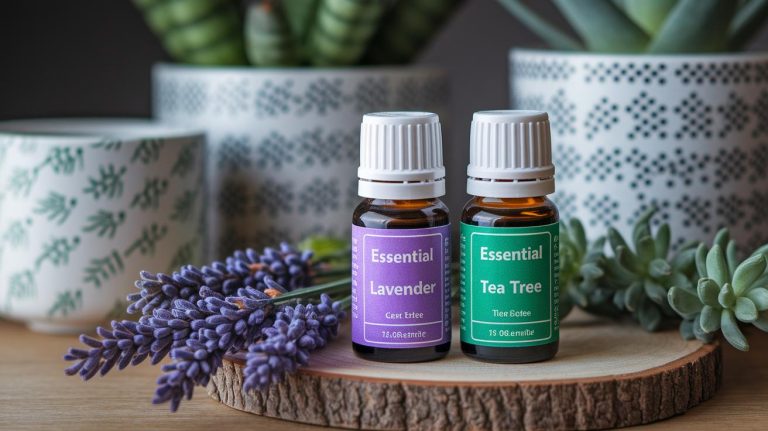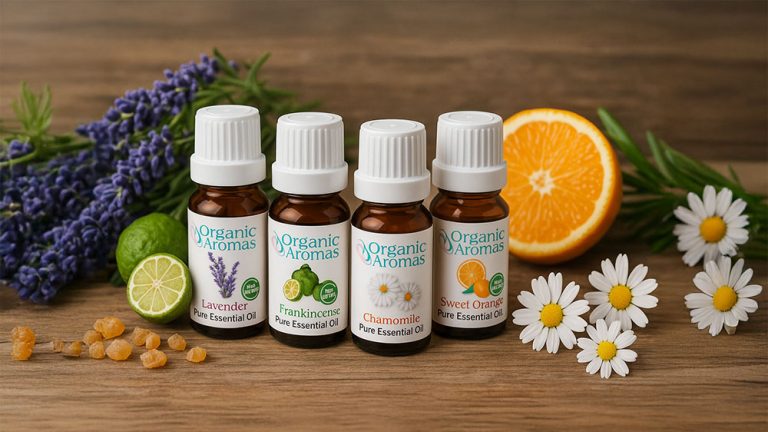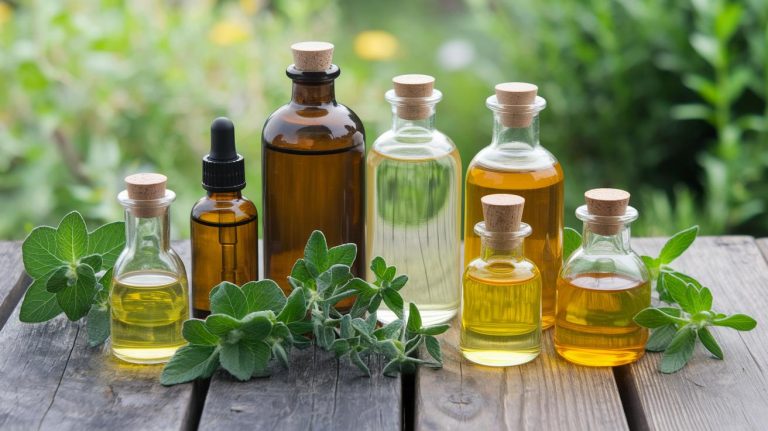Essential Oils Allergic Reactions Breathe Easy
Have you ever spritzed Lavender Oil and felt its soft mist calm you? Then hours later you notice your skin is red and itchy.
That unwelcome rash is allergic contact dermatitis (when your immune system overreacts). It can turn a soothing ritual upside down. But not every tingle or burn comes from an allergy. Irritation (your skin’s direct reaction) can hit you right away with tightness or heat.
Next we’ll explore five essential oils that often spark allergic reactions. We’ll share simple safety steps backed by Organic Aromas’ purity promise so you can truly breathe easy.
Mechanisms of Essential Oil Allergies
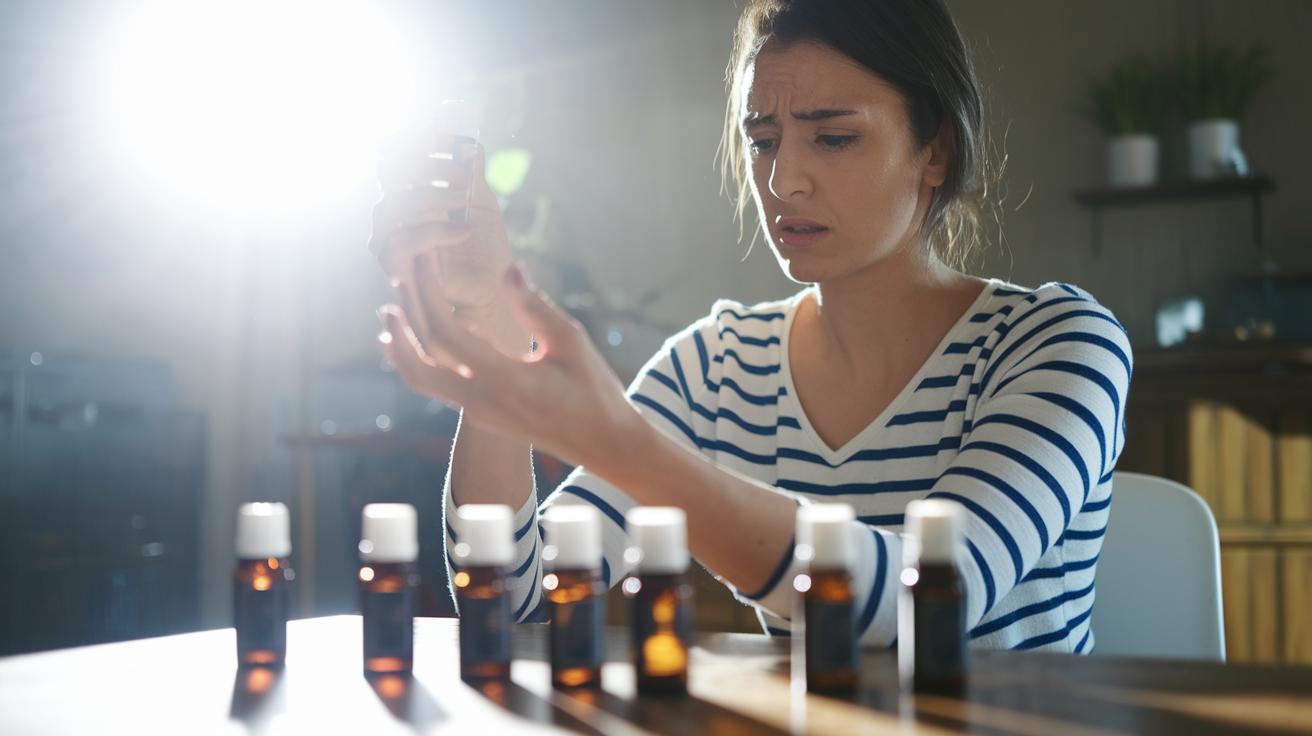
Have you ever felt a sudden rash after spritzing a gentle mist of lavender? Allergic contact dermatitis (immune-based skin reaction) happens when your body mistakes an oil compound for a threat. Skin cells send out warning signals that show up as redness, itching, or tiny blisters. But irritation (non-immune reaction) is different, it’s a direct response to overuse or harsh contact that can feel like burning or tightness right after you apply an oil.
Over time, using the same oil can prime your system in a process called sensitization (allergy build-up after multiple exposures). Each time your oil sits out or heats up, oxidation (how air, light, and heat change oil molecules) can create new compounds that your body flags as invaders. Citrus blends like lemon or bergamot are especially prone to this, making your skin extra reactive after oxidation. You might enjoy Lavender oil safely for months and then wake up to an unexpected rash.
True allergic responses usually show up later, between 12 and 72 hours after contact, so a rash can feel delayed. That lag helps you tell immune reactions apart from instant irritation. And it’s not just your skin you need to watch. Inhaling too much undiluted mist can spark sneezing, coughing, nasal congestion, or chest tightness. Folks with asthma or other breathing issues often notice these signs more quickly.
Here’s the thing. Your diffuser ritual deserves a quick patch test on your inner wrist first. First dilute your essential oil properly (check our safety guide), then wait a full day. If your skin stays calm, you’re set. Organic Aromas offers easy dilution charts and safety tips so you can enjoy every aromatic moment with confidence.
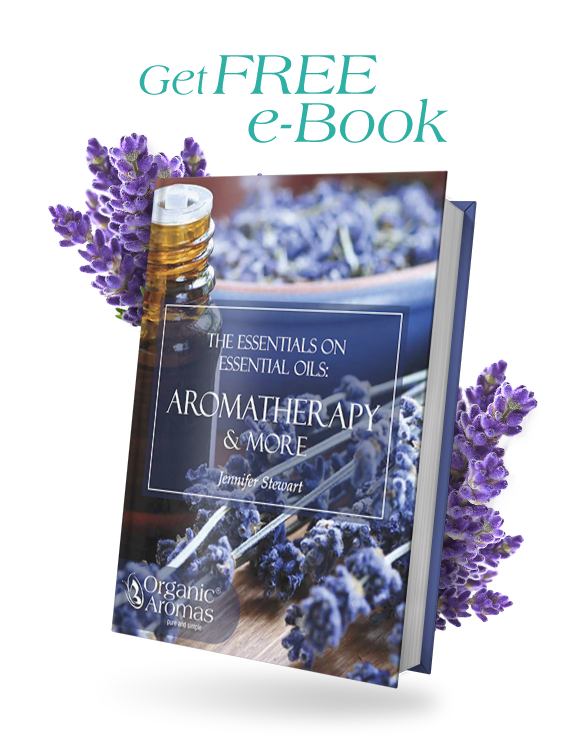
Sign Up to Get Your FREE
e-Book Here…
Top Allergenic Oils and Their Key Chemicals
Here at Organic Aromas, we want every breath of oil to bring you calm and comfort. But a few oils can also cause skin reactions.
If you’re curious which essential oils often stir up skin issues, here are eight to keep on your radar: Lavender, Tea Tree, citrus oils like Lemon or Sweet Orange, Lemongrass, Ylang-Ylang, Jasmine Absolute, Peppermint, and Frankincense. These scents can trigger allergic contact dermatitis (skin rash) or simple irritation. Ever noticed a little itch after a whiff of Lemon oil?
Lavender oil can cause sensitivity even at small amounts – see lavender essential oil side effects. Tea Tree might show up as red, itchy patches. Tiny blisters can bloom from Ylang-Ylang or Jasmine. Peppermint often leads to hives along the hairline, while Frankincense can leave warmth or redness that hangs around.
| Allergenic Compound | Typical Source Oils |
|---|---|
| Limonene | Citrus oils (Lemon, Sweet Orange) |
| Linalool | Lavender, Tea Tree |
| Citral | Lemongrass, other citrus blends |
| Cinnamaldehyde | Cinnamon bark |
| Eugenol | Clove, Bay Laurel |
To understand why these oils can irritate, look at their main compounds. Limonene (a citrus scent molecule) can turn harsh when it meets air. So citrus oils can become phototoxic (sun-sensitive). Read phototoxic essential oils precautions for tips. Linalool (a floral aroma compound) in Lavender and Tea Tree can react with oxygen into stronger irritants.
Citral (the lemony part) in Lemongrass and Sweet Orange can sting sensitive skin, while Cinnamaldehyde (the cinnamon spice note) brings warmth but can spark reactions. Eugenol (clove’s spicy kick) often sensitizes skin.
Storing oils in cool, dark spots with tight lids keeps them fresh longer and slows oxidation. Result? Fewer flare-ups.
Recognizing Symptoms of Essential Oil Allergic Reactions
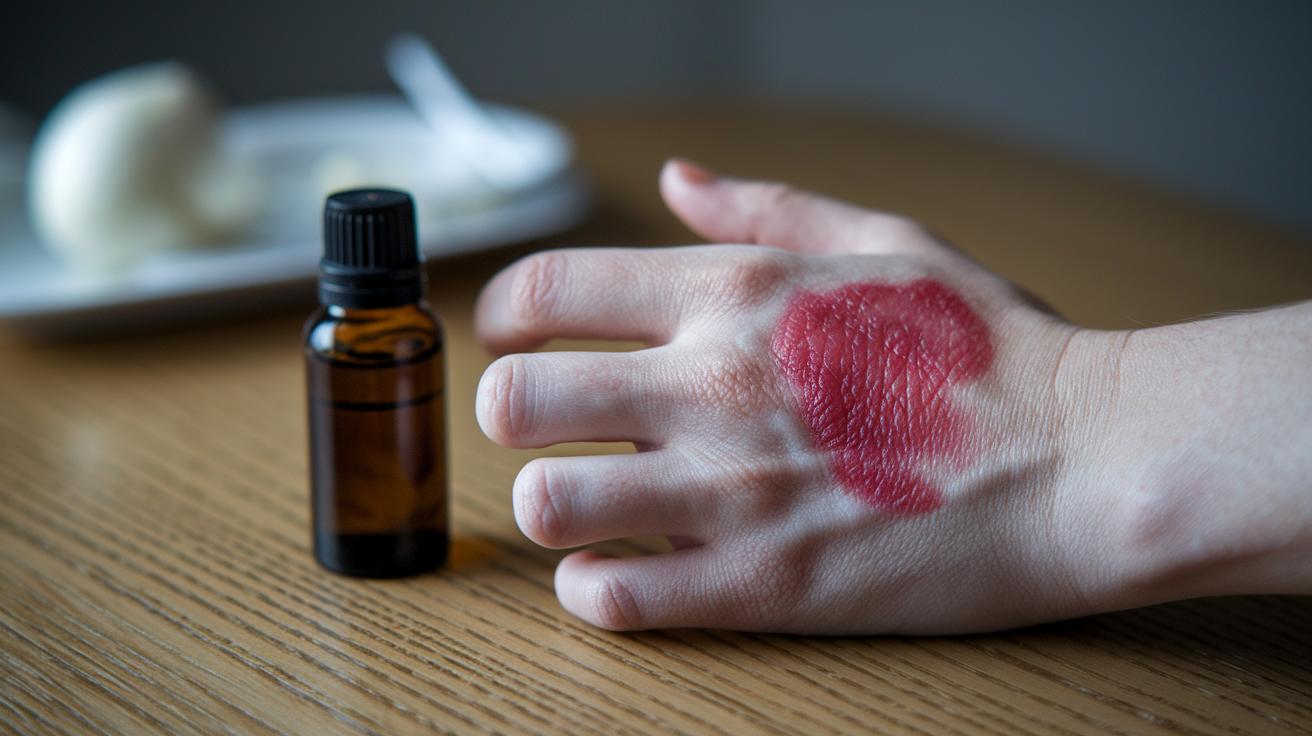
Our skin may show delayed signs 12 to 72 hours after you try a new essential oil. Have you noticed any of these?
- Redness
- Itching
- A rash
- Dry or flaky patches like eczema from oil use
- Urticaria (tiny itchy hives that can merge into larger welts)
- Blisters or swelling
Sometimes reactions affect breathing and your whole body. Check for:
- Sneezing
- Coughing
- Runny nose or nasal irritation
- Chest tightness, especially if you have asthma
- Throat or facial swelling
- Dizziness
- Rapid heart rate
- Anaphylaxis (a serious reaction causing labored breathing and faintness)
Risk Factors for Essential Oil Allergies
Have you ever felt your skin flare up at the faintest whiff of lavender or peppermint? If you have eczema, asthma or seasonal allergies, your immune system can mistake oil molecules for threats. That can cause allergic contact dermatitis (an immune reaction) instead of simple skin irritation. And if someone in your family reacts to scents, you might be more likely to overreact too.
Next, think about spring pollen or dust mite stuff. Those sensitivities can make you more likely to react to aromatic terpenes (plant scent compounds). So even the oils labeled for sensitive skin aren’t a sure thing if your body is already on high alert.
Kids under three have a thinner skin barrier (their skin protection). That means a gentle puff of mist can show up as red patches or sniffles. Wait, let me rephrase that… a small waft of scented air might leave blotchy spots or a runny nose.
Pregnant women often notice their noses and skin get extra sensitive each trimester. See our essential oil safety pregnancy guide for gentle ideas. And as we age, skin thins out, so a soft mist might bruise you or feel like a sting faster than it used to.
Pro aromatherapists say if you run diffuser sessions too long (say more than 30 minutes) you could spot an allergic reaction. Studies show daily diffusing without breaks can sensitize about 10 percent of people over time. Also, storing oil bottles by a sunny window or near a heater speeds up oxidation (when oils break down with air or light), creating new irritants that can invite flare-ups.
Preventing Allergic Reactions with Essential Oil Safety Practices
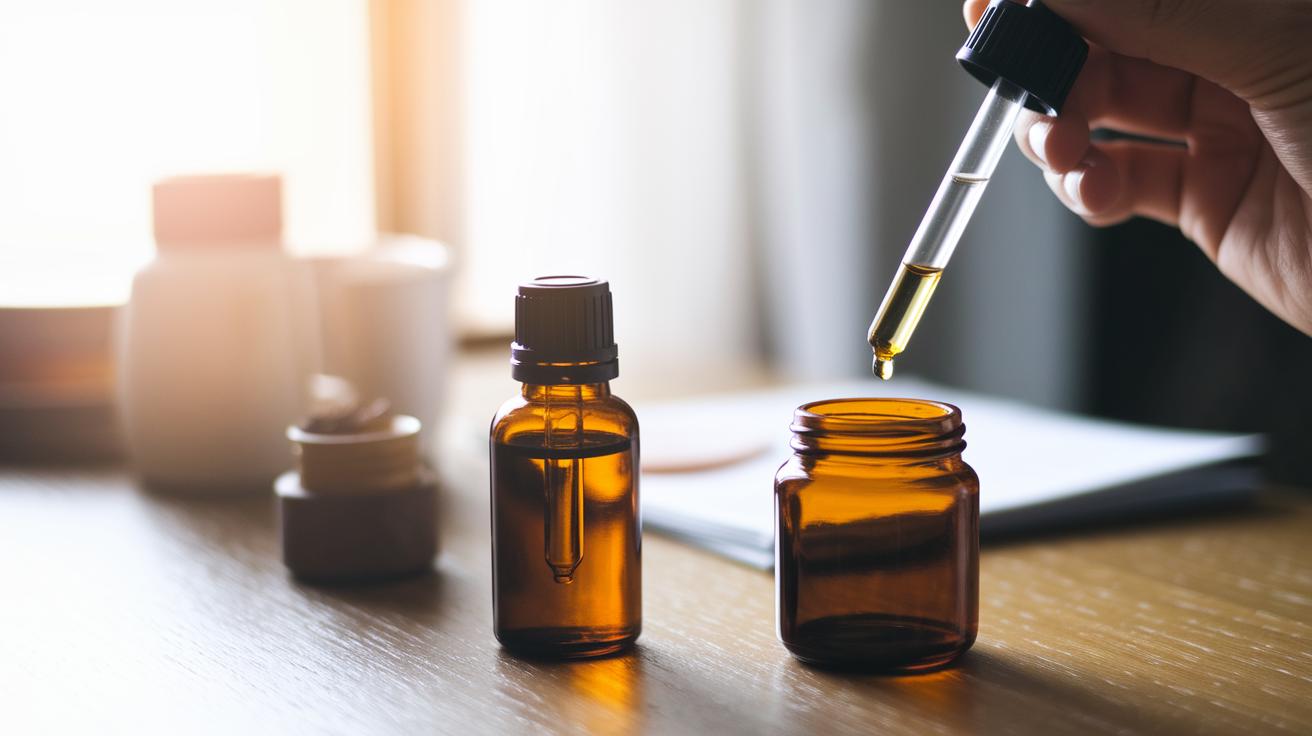
Have you ever sniffed a new oil and felt a tiny itch or surprise sneeze? Let’s swap that worry for a soothing mist. Here are some simple, sensory-friendly steps to keep your diffuser moments calm and carefree.
- Store oils in dark, airtight glass bottles. Tuck them away from heat and sunlight to slow oxidation and keep their aroma bright.
- Always dilute your essential oil in a carrier oil (a mild oil used to dilute essential oils). Mix one drop of essential oil per teaspoon (5 ml) of carrier oil, that’s about a 1 to 2 percent dilution.
- Do a patch test (small skin trial). Mix one drop of essential oil with a teaspoon of carrier oil, apply it to your forearm, cover it, and wait 24 hours.
- Rotate your favorite scents. Switching oils every so often helps you avoid overusing one aroma and lowers sensitivity risk.
- Diffuse for just 30–60 minutes in a well-ventilated room. A gentle mist is plenty to fill your space with calm.
- Never apply neat oil (undiluted) to skin or near eyes and mucous membranes.
Breathe easy. Savor the calm. By storing oils properly, sticking to safe dilutions, and always doing a patch test, you’ll keep those natural benefits flowing, without the itch or sneeze.
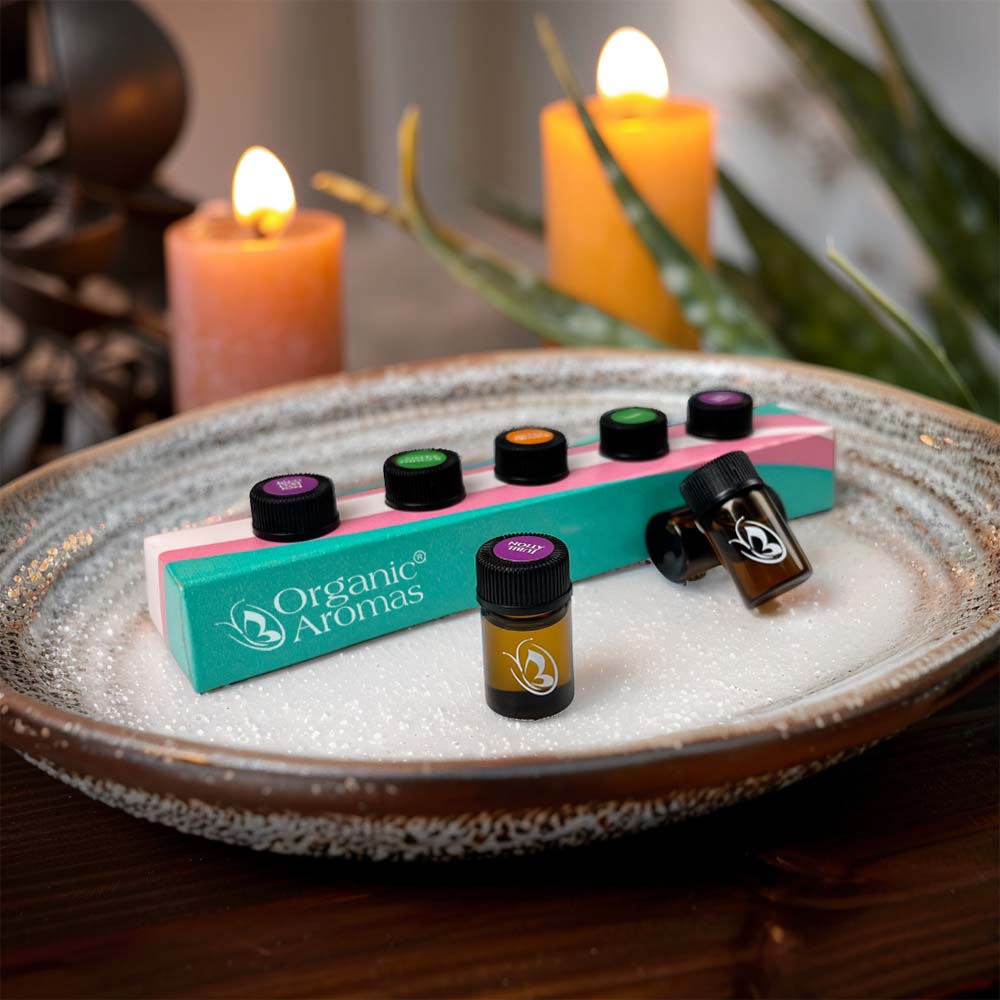
AromaCurious™ Starter Kit – Choose-Your-Own 5-Pack Essential Oil Sampler (2ml Each)
Managing Essential Oil Allergic Reactions: First Aid and Treatment
Noticed redness, itching, or a rash after misting Organic Aromas essential oils? Stop using the oil right away. Rinse the area with cool water and mild, fragrance-free soap. Pat dry with a soft towel and don’t rub the rash.
Have you ever felt how a cool water rinse can ease a hot spot? To calm burning or tightness press a clean cold compress on the area for ten minutes. You can reapply every hour to keep things cool. Then smooth on a fragrance-free moisturizer or aloe vera gel to soothe inflammation and help healing.
For quick relief try an over-the-counter antihistamine (a medicine that reduces itching and swelling). You can also apply a thin layer of topical corticosteroid cream (medicine to calm redness). Keep an eye on your skin and watch for dizziness, trouble breathing, or swelling around your face or throat. If blisters appear or the rash spreads beyond one spot seek urgent medical care.
If symptoms linger or flare up with a new oil it’s a good idea to visit a dermatologist. A skin specialist can do patch testing (applying small amounts of oils on the skin to find triggers). Then you’ll get tips to build a safer essential oil routine.
Choosing Hypoallergenic Essential Oils and Alternatives
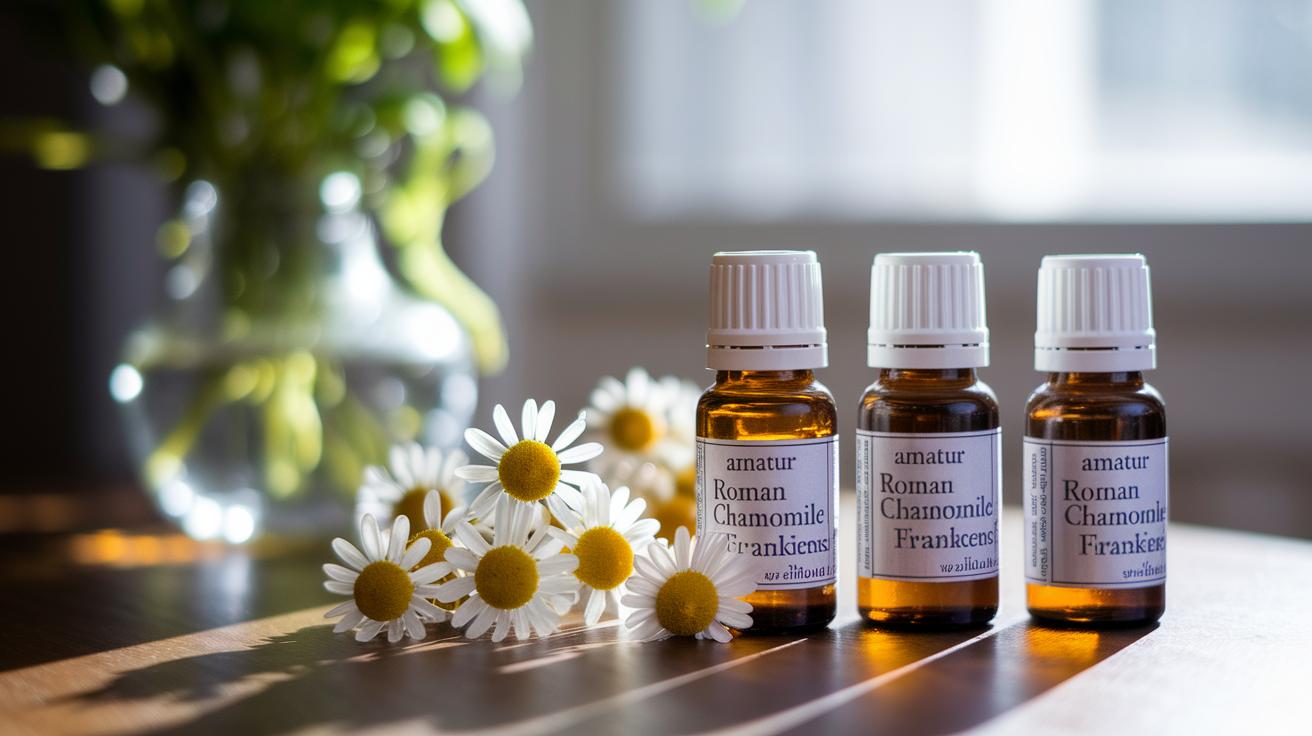
When your skin flares, you deserve a gentle whirl of scent. At Organic Aromas we’ve gathered oils (oils less likely to cause skin reactions) that soothe and calm. Think of this list as your quick guide when irritation strikes. Keep it close and breathe easy.
Ever noticed how a soft breeze of chamomile can calm you?
- Chamomile oil: a gentle wave of calm for red, itchy skin.
- Helichrysum oil: soft earth notes that hug your senses.
- Ravintsara oil: crisp, clean aroma like early morning air.
- Niaouli oil: mild mint warmth that comforts without sting.
- Frankincense oil: grounding depth that brings you back to center.
These oils often have fewer reactive terpenes (plant compounds that can spark irritation), making them safer for sensitive skin.
Always test on a small patch of skin, your wrist works well. Wait 24 hours to watch for any redness or itch. Then you’re free to enjoy your mist.
Safety first.
If you’re prone to stronger reactions, um, you can try these non-allergenic options:
- Fragrance-free lotion for a simple, soothing touch.
- Non-toxic candle for a soft, scent-free glow.
- Synthetic botanical blend (lab-tested) that mimics plant scents without trigger molecules.
All are certified non-allergenic to keep flare-ups at bay. Keep these options on hand for unexpected irritation and let your space stay calm.
Final Words
We dove right into how allergies form, from immune-driven contact dermatitis to simple irritation. We mapped out top offenders like lavender and citrus and spotted key chemicals that tend to cause trouble. Then we covered skin and breathing signs, personal risk factors, and safe usage steps.
Next, you have clear first-aid tips, storage and dilution guidelines, and a shortlist of gentler oils. Try patch tests and mindful diffusion.
With these insights, you can navigate essential oils allergic reactions with confidence and enjoy calm, spa-like moments at home.
FAQ
Can you be allergic to essential oils?
You can be allergic to essential oils when your immune system reacts to oil compounds like limonene or linalool, causing contact dermatitis (skin inflammation) or respiratory symptoms after inhalation or skin contact.
What are the symptoms of an essential oil allergy?
The symptoms of an essential oil allergy include redness, itching, rash, blisters, swelling, or dry patches on skin after 12–72 hours, plus sneezing, coughing, nasal congestion, or chest tightness.
Can allergic reactions to essential oils cause blisters?
Allergic reactions to essential oils can cause blisters when sensitized skin develops delayed contact dermatitis, leading to fluid-filled bumps that appear 12–72 hours after exposure.
How long does an allergic reaction to essential oils last?
An allergic reaction to essential oils typically lasts 1–2 weeks, as delayed symptoms fade gradually, though severe cases may need medical treatment to fully clear.
What does an essential oil rash look like?
An essential oil rash looks like red, raised bumps or patches that may be itchy, dry, flaky, or form blisters, often appearing hours to days after application.
Can inhaling essential oils trigger an allergy?
Inhaling essential oils can trigger an allergy by causing respiratory symptoms like sneezing, coughing, nasal congestion, or chest tightness, especially in people with asthma or allergies.
How do I treat skin reactions, burns, or allergies from essential oils?
To treat skin reactions or burns from essential oils, stop oil use, wash with mild soap and cool water, apply a cold compress and aloe vera, use antihistamines or corticosteroid cream, and seek medical care if severe.



